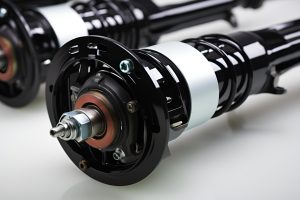Table of Contents
How to distinguish the filter is good or bad?
- No Comments
The quality of a filter directly impacts the lifespan of a car’s engine and the overall driving experience. Many car owners prefer to purchase filters online, but distinguishing between a good and bad filter isn’t always straightforward. Today, we’ll explore key methods to evaluate filter quality.
Air Filters: Focus on Material and Craftsmanship
To assess an air filter’s quality, consider both its material and craftsmanship:
- Material: A simple iodine test can reveal the presence of starch in the filter paper. Drop iodine onto the filter paper; if it turns black or dark blue, it indicates starch content. Filters with starch are prone to absorbing moisture, deforming in humid conditions, and ultimately accelerating engine wear instead of protecting it.
- Workmanship: Check for precise craftsmanship. Look out for excessive glue, uneven rubber edges, or poor finishing. These flaws often signal substandard manufacturing. Additionally, inspect a used filter for signs of deformation or melted glue. If the glue has melted, it indicates poor-quality materials, rendering the filter ineffective.
Oil Filters: Look Beyond Weight
Many believe that a heavier oil filter signifies higher quality, but this is a misconception. The weight of an oil filter is determined by its materials and design, not necessarily its performance. Instead, consider the following factors:
- Appearance: Examine the printed labels, thread smoothness, and overall finish. Poorly threaded or jagged components often indicate lower quality.
- Standards: Look for filters that meet OE (Original Equipment) standards. These filters are designed to provide optimal performance and reliability.
Key Design and Performance Considerations:
- Filter Material: The quality of the filtration material is crucial, as it determines the filter’s performance grade.
- Seal Integrity: The height of the rubber sealing ring’s exposure after assembly is critical. A low seal height increases the risk of oil leakage.
Quality Control Indicators:
Manufacturers’ quality control can also be judged by these external factors:
- The integrity and verification of the threads on the mounting plate.
- The smoothness and uniformity of the shell edges and rolled seams.
- The quality of surface treatments, such as powder coating or cathodic electrophoretic paint.
- The clarity of printed instructions and the ink’s adhesion to the metal shell.
Cabin Air Filters: Efficiency and Material
Cabin air filters contribute to a clean, comfortable driving experience by maintaining air quality inside the vehicle. Here’s how to evaluate their quality:
- Material Thickness: Thicker white fabric filters generally offer better filtration efficiency. If the fabric is layered, it likely includes melt-blown cloth, which enhances filtration performance.
- Activated Carbon Filters: Identify good carbon filters by their smell. A sour or unpleasant odor suggests poor-quality materials. You can also test effectiveness by placing a lit cigarette under a cup covered with the filter. If smoke can still be detected through the filter, the activated carbon’s absorption ability is inadequate.




-1-300x200.jpg)
